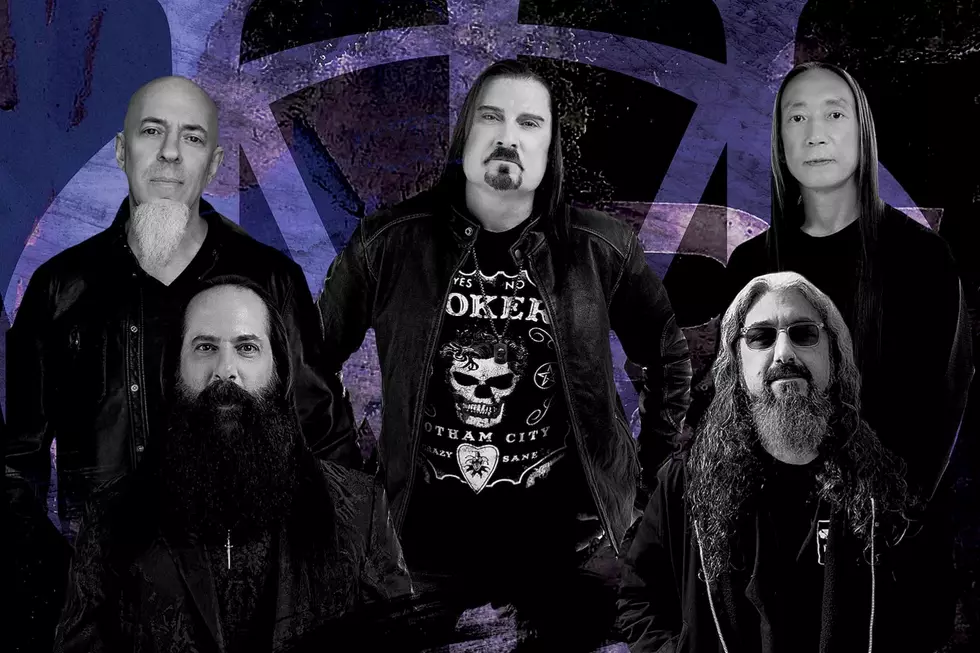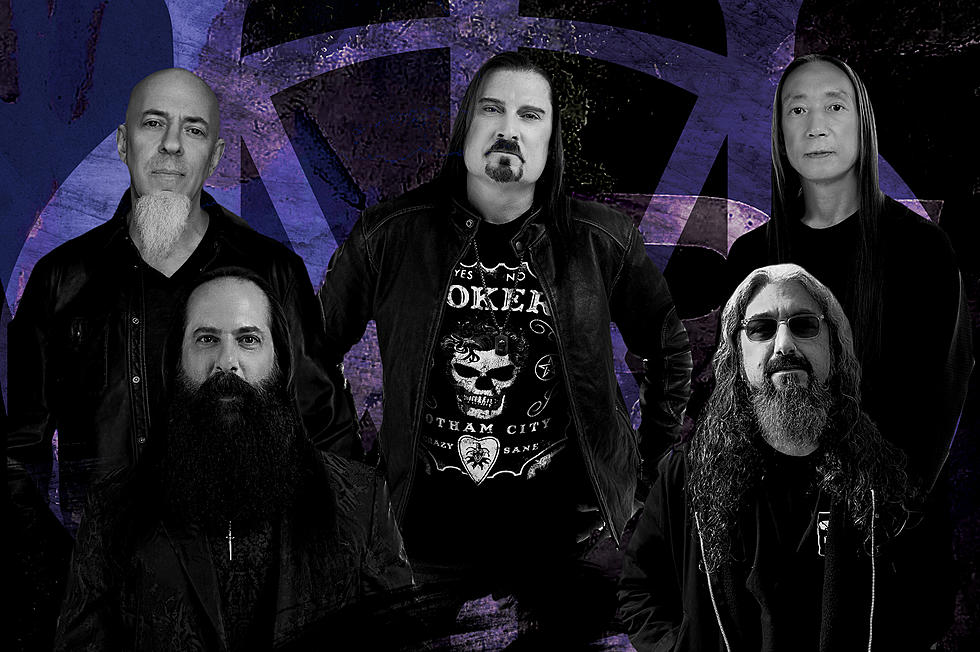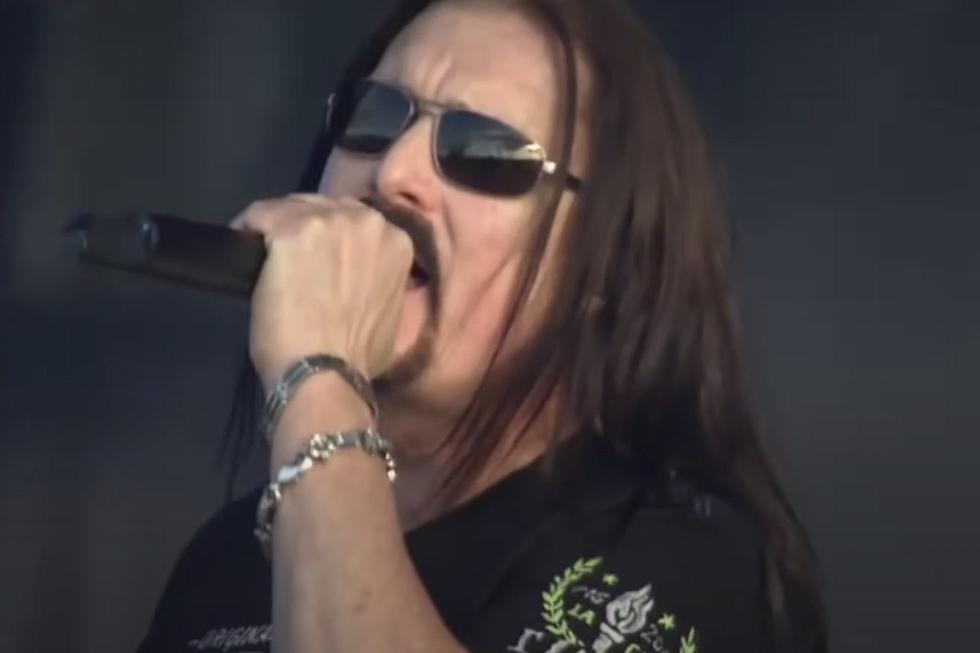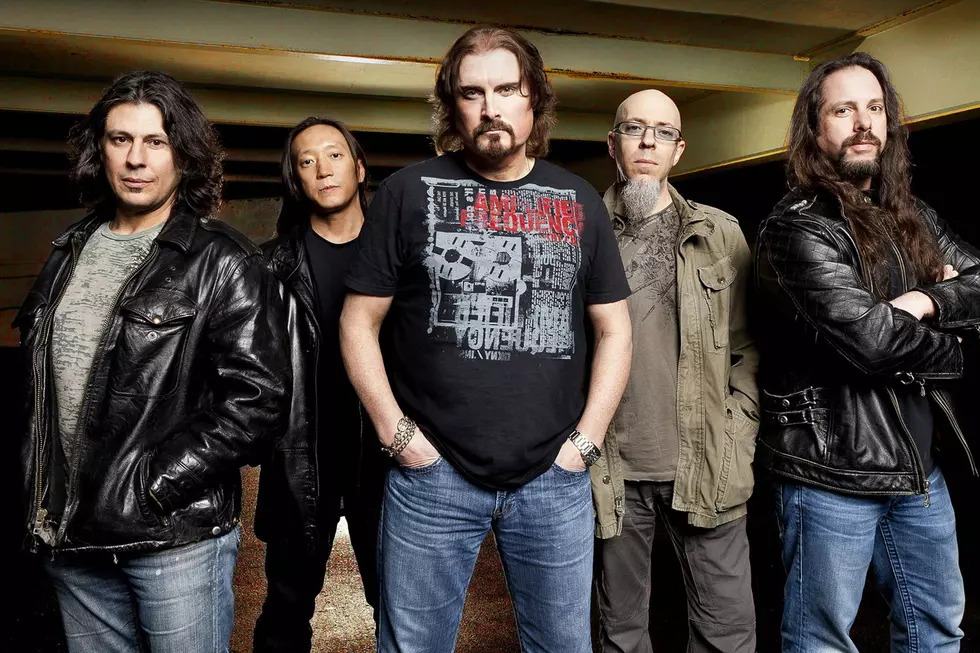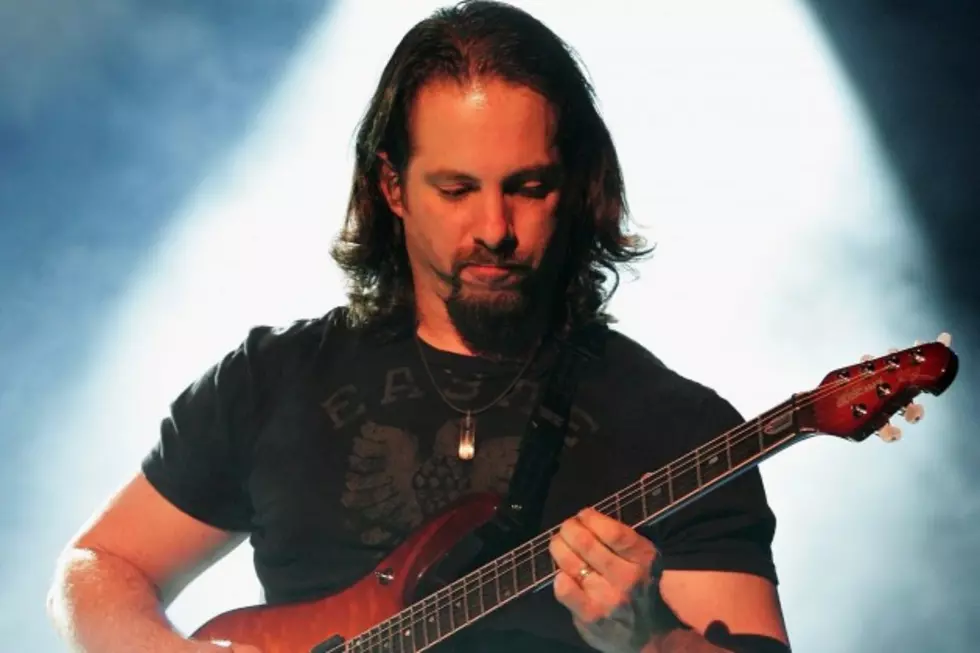
John Petrucci Of Dream Theater On The Band’s New Album, Rush + Touring With Deep Purple
For classic rock fans looking to broaden their horizons a bit, you’re not stepping too far out of the box when it comes to the music of Dream Theater. For one thing, the band itself is veering dangerously close to classic rock territory, as it heads towards the 25-year mark with lead singer James LaBrie at the helm. The band first formed in 1985, which pushes the overall history of the group to a timespan of nearly 30 years.
The roots of Dream Theater draw upon a familiar bunch of bands, including Pink Floyd, Rush, Led Zeppelin, Van Halen, Deep Purple, Iron Maiden, Yes and lots more. They have done quite a lot to ensure that future generations would be able to carry a love for prog music forward, beginning in 1992 with their major label debut ‘Images and Words,' which charted in the Billboard Top 200 Albums and went gold.
With the release of their 12th studio album, ‘Dream Theater,’ the band has made quite a statement, both with the fact that it is self-titled and also from a musical standpoint. Self-titled albums are often artistically titled specifically to represent a creative rebirth and certainly, that rings true for Dream Theater.
It’s the band’s second album since the 2010 departure of founding drummer Mike Portnoy, long a fan favorite and a huge creative force within the group. The band carried forward without Portnoy (replacing him with drummer Mike Mangini) and never lost its course. 2013 brings the next album and chapter in Dream Theater’s ever-evolving history and one which without question, is one of the most focused efforts to date from the band.
Founding guitarist John Petrucci, who also produced the new album, joined us to talk about the inspirational zeroes and ones which came together to form the new material and he also shared memories of touring with classic rock legends through the years.
I don’t know how a Dream Theater record can be concise at 68 minutes, but it feels very concise when you listen to it.
Yeah, it does. We kind of did that on purpose. We wanted to keep it really flowing and to not make it too long of an album. Sometimes our albums get up there to maximize the CD and when we went in, we said, “Let’s see if we can keep it around an hour or so.” Even [with] some of the tracks, [we were focused on] not making all of them eight, 10 or 12 minutes long [and instead] having a few that were five or six minutes [in length]. So it’s probably just that you’re feeling what we did on purpose to keep the flow moving along and very natural feeling.
As you mention, excluding the final track, a lot of the songs on this record are somewhere in that shorter range. You packed a lot into those songs and some of them feel epic in the way that some of your classic longer tracks have in the past, without the length. Was that hard for you to edit yourself in that way to make things a little bit tighter this time around?
Yeah, it was definitely difficult and it was totally a conscious decision and exactly what you picked up on. What we didn’t want to do is we didn’t want to sacrifice any of our style of our sound or our direction, just because the song length is shorter. So we consciously tried to keep reins on the time, but pack them full of all of the energy and all of the things that we feel make us unique. It took a lot of editing and reworking and moving things around and some of the songs were more of a challenge than others. But it was a conscious effort not to really meander on sessions and take out things that really weren’t contributing to the song. Also, a big part of that was making the melodic content really, really strong. Because I think that helps to really move the song along as well. So it was all things that were a challenge, but it was also fun to do.
I think that’s something that I noticed about this album is that this is a very Dream Theater-sounding record, yet at the same time, it’s a very different sounding record to me. The whole thing sounds really clean and uncluttered from a mixing standpoint and yet guitar-wise, drums, etc, it’s a very heavy record in places, very in your face. Were there certain things and perhaps even albums that you were working off of, as far as how you wanted the various elements of this to turn out?
Well, again you’re picking up on exactly what some of the goals were going in. I think a lot of that has to do with, first of all, the way that Rich Chycki engineered it. He just naturally gets really powerful sounds that are kind of jumping out and that are in your face, heavy drum sounds and heavy guitar sounds -- that’s how Rich engineered it and that’s how we went forward.
Also, the way he mixes, it’s kind of in such a way where everything is loud but you can hear everybody really clearly. At the same time, some of that is arrangement too. As a producer, I felt one of my most important jobs was to figure out arrangement-wise and orchestration-wise what needed to be there and what didn’t. So a lot of times, we didn’t layer things as much as we would of. There really wasn’t an album we were referencing, it was more of just a mindset that we just had going in.
It has to be cool for you guys as Rush fans, to be working with Rich. What was attractive to you about the opportunity to work with him? What does he bring to the table? Were there past things that you had heard that really made it attractive?
Yeah, there were a few things. We had a great time working with him on the last album -- he recorded all the vocals -- and he and James for the most part, did that separately in another studio up in Toronto. The vocals came out so good on the last album, I thought and there was such a great history and rapport that he and James had. Also, during that process, Rich had played me some things that he had mixed, some things that are of course out there like Rush and stuff, but some other things that maybe are not as well known and I was just blown away by the sounds and the mix and the power.
We just really hit it off. He’s just a great guy, a really funny person and he made it this incredibly light and fun mood in the studio. And like you said, his history with Rush was amazing, so even things like just saying, “Oh, I wonder what Alex used on that song” and he’d say, “Oh well, it’s this pedal and I have one, so here you go.” It’s kind of fun having that history as well.
I think he’s an interesting guy, because he’s got one thing that you hear with Rush, but he has something completely different when he works with somebody else. It’s certainly not like he’s got a one-dimensional sound. He’s got a lot of different things that he can put into play, depending on who he is working with.
Definitely. The thing about Rich is he is really a very talented engineer. His ears are unbelievable and I saw that not only in the way that he got guitar sounds, drum sounds and rock things, but all of the way to recording real strings in the studio and just making the strings sound beautiful. And like you said, some engineers or mixers have a certain signature thing they do where all of the things they do, you can identify with them. Maybe they use certain triggers or they use certain techniques that makes all of the different bands they do have a similar sound.
But yeah, I agree, Rich is more of a chameleon and he can use that incredible talent based on the specific band he’s doing, which is great, because then he’s not imposing his sound on us -- he’s just making us sound great.
'The Looking Glass' is generating quite a few grins, just because of what feels like an unmistakable nod to Rush. If you guys ever wanted to tour a tribute to ‘80s Rush, I think that track might demonstrate that you could pull it off.
Oh, cool! Rush is one of the common denominators in our band as far as a band that everybody loves and grew up with and was a big influence. You know, Alex has this unbelievable gift for creating these big arena rock guitar riffs that are in a major key and somehow just get the audience pumped from the first note. Things like ‘The Spirit of Radio’ and ‘Limelight’ and you name it -- it’s a challenge to do that, because it’s not easy and you want it to be original and unique and have that kind of conviction and power.
As a kid growing up, you probably had a lot of fun dissecting those albums to figure out how they were doing all of that stuff.
Oh totally, I learned all of that stuff, played with all of my friends. Everybody was in a band and everybody played. We knew every Rush song. [Laughs]
What was the key album for you?
‘Hemispheres’ was probably the biggest for me, with ‘La Villa Strangiato’ and [the other songs on that album] -- that to me is the ultimate sound and blending of prog rock with metal and dark sides and great guitar and bass fusions, conceptual lyrics and all of that stuff. It kind of has it all.
It feels like there are more keyboards in the mix on this album. Am I hearing that right?
I’m not sure. It depends on the song, I would say. Again, one of the things that Rich was able to do, not only do you hear it with the keyboards, but you hear it with bass, which is a little bit unusual for our band -- sometimes the bass gets buried with all of the big sounds going on. He engineered it and mixed it to where everything is loud. If you focus in, you can hear every drum hit, every guitar note, every keyboard part, the bass standing out and the vocals, everything. It’s part of that whole clarity thing.
So I guess as far as the keyboards being more prominent, it would depend on the track. A song like ‘The Enemy Inside’ is kind of more guitar riff-driven and has its keyboard moments, whereas something like ‘Illumination Theory’ definitely lends itself more to that kind of prog era keyboard approach. So you might hear it more out in front on something like that.
I was going to ask about ‘Illumination Theory,’ because if you look back to the ‘70s, obviously one thing that they were working against then was making sure that it would fit on a side of vinyl. I know that you had to think about that a little bit this time around, because you’re doing vinyl for this album. In this digital age where there’s really no need for you to edit if you don’t want to, how do you edit yourself on a piece like that?
A song like that, in thinking about the context of the album and the kind of album that we wanted to make, we sort of knew at that point in the writing sessions how much time we had left to deal with. So we have this number in our heads that we were going to write a song in the 20-minute mark and that kind of keeps us in check. So there’s a lot of room obviously and a lot of time to develop things and go in several different directions and go to different places musically, but it wasn’t just a carte blanche, you know, this is going to be 30 or 45 minutes long -- we knew it was going to be in that 20-minute range, so that helped when we mapped it out. As we were doing it, we were sort of conscious about how much time we had left. That’s how we worked that one out.
With ‘The False Awakening Suite,’ is it too late in the game to get in touch with George Lucas and get stormtroopers and other random 'Star Wars' characters choreographed into the moment when that opens the show?
[Laughs] Yeah, right. It’s totally in that range, big time, I know! We drew from all of that stuff, from the John Williams stuff and the Hans Zimmer stuff -- we just wanted to make our version of a cinematic opening to an album instead of a movie. But yeah, it definitely has that 'Star Wars' vibe a bit. [Laughs]
You guys have never been lacking for a cinematic-type opening for an album if you want to do one. It’s always fleshed out in a very epic fashion and certain this time around, using real strings on the opening and the end of the album, that helps to further realize the reality of that a lot.
Oh absolutely, the immediacy of the sound of real strings, it adds to the drama and it just adds another texture to it that is unmistakable. It’s amazing how well real strings blend with metal, like that whole sound. You listen to the sounds on ‘False Awakening Suite,’ the guitar is a seven string that’s detuned, it’s dropped down to A. The drums are heavy and everything is like really thick and crunchy and then you have these strings over it and it works -- it doesn’t sound like one is pulling from the next. It’s an incredible way that those two things marry -- you wouldn’t think that they would, but they have been used in music and rock and metal mixed with symphonic and classical music has been going on for a long time. It’s incredible the way it works.
In the late ‘90s, the band toured with Deep Purple and Emerson, Lake and Palmer and you’ve done a fair amount of touring along those lines, doing shows with classic bands that began as future influences in your record collection. That tour specifically, what were those shows like for you?
That was so much fun. I mean, you’re talking bands that like you said are classic and you listen to all of those songs as they’re playing them and you’re like, “Oh my God, I grew up with these songs and I’ve heard them on the radio a million times.” These bands were influences of ours and here we are playing with them every night. It was just a really fun tour. I believe it was summertime, so we were playing a lot of shed and open-air venues. It was a great vibe and very, very cool. I’m a huge Steve Morse fan, so it was great to see him play every night. He’s like my favorite guitar player of all time.
You also got a chance to tour with Yes. Whether it is a band like that or Deep Purple, do you get the chance to compare notes with them and talk shop?
Absolutely. As much as we can. I definitely picked Steve Howe’s brain a bunch. You know, he’d be the only one out of the band on that tour doing soundchecks, so he’d be at the venue early and I’d go up there and watch him play and look at his amps and we talked guitars. Again, a huge influence on me -- Yes is a gigantic influence on me and the rest of the band and Steve on me [personally] as a guitar player. Those moments are just priceless.
That’s not something that happens every day where you’re on the road with your guitar heroes and your band heroes and you can pick their brains and stuff. Some of those tours, you know, it’s funny with everybody’s schedules and stuff, how sometimes you don’t see a lot of the guys a lot.
We toured with Iron Maiden and we opened and they’d come in later and I didn’t have a lot of time to get to hang out with those guys. Whenever you did, whether it was sitting down at catering or something, you tried to take advantage and just hang out and talk and trade stories.
At that time that you played those shows with Yes, that was as close as fans were going to get to hearing 'Drama'-era material from Yes with the excerpt of ‘Machine Messiah’ that you guys would stick in the set.
Yeah, that was cool. I was a little nervous about doing that. I didn’t know if that would be something that they would be offended by. [Laughs] It’s like we’re playing stuff that they wouldn’t play, but it seemed to go over okay and everything seemed fine. The fans really appreciated it and I think it helped a lot of the Yes fans who didn’t know who we were kind of get on the same page with us.
As we mentioned, you’re putting the latest album out on vinyl and Hugh Syme once again did the artwork. Here’s the guy that designed the Starman for Rush in addition to playing on Rush albums back in the day. What is it that Hugh brings to the table that you like in terms of the design work that he does for DT?
I love working with Hugh. Obviously, there’s all that history and all of those classic albums he’s done, but there’s just a chemistry. It’s the same thing with musicians [where] when you play with somebody and get together, there’s this natural back and forth flow of music that’s effortless.
He has a chemistry with our band where all we have to do is have one conversation, without him even hearing music, you know? We maybe send him a couple of lyrics and he just gets it. He goes to work, we talk about some concepts and he comes back with just this brilliant artwork that’s thought provoking and just creates that alternate world where you feel like when you open the CD or the album, you’re looking at it and you’ve been transported into Dream Theater land. He has just a really, really great way of doing things.
Sometimes things are a little cheeky the way he does it and sometimes things are subtle. He has so much insight and talent as an artist to where the art and the music and the band and the whole persona and image that we’re trying to portray, everything just fits in like pieces of a puzzle.
What can fans expect from the upcoming tour?
The upcoming tour is going to be an evening with, which it’s the first time we’ve done that in a while. We’re going to have two sets with an intermission and play as much music as we can! [Laughs] We’re working on the show now -- we’ll have new video content and a new stage setup and design. We always try to deliver something that’s a great experience, not only musically, but visually.
We want people to be transported when they step into the venue and see us and hopefully walk away with that feeling that they had a great night and they took in something that was entertaining and really cool, kind of like the feeling you get after you watch a movie and you leave the theater and you kind of feel like you just woke up out of this dream and you’re leaving saying, “Wow, that was really cool.” So we try to do our best to make that happen and make it better and better every time we go out.
More From Ultimate Classic Rock
